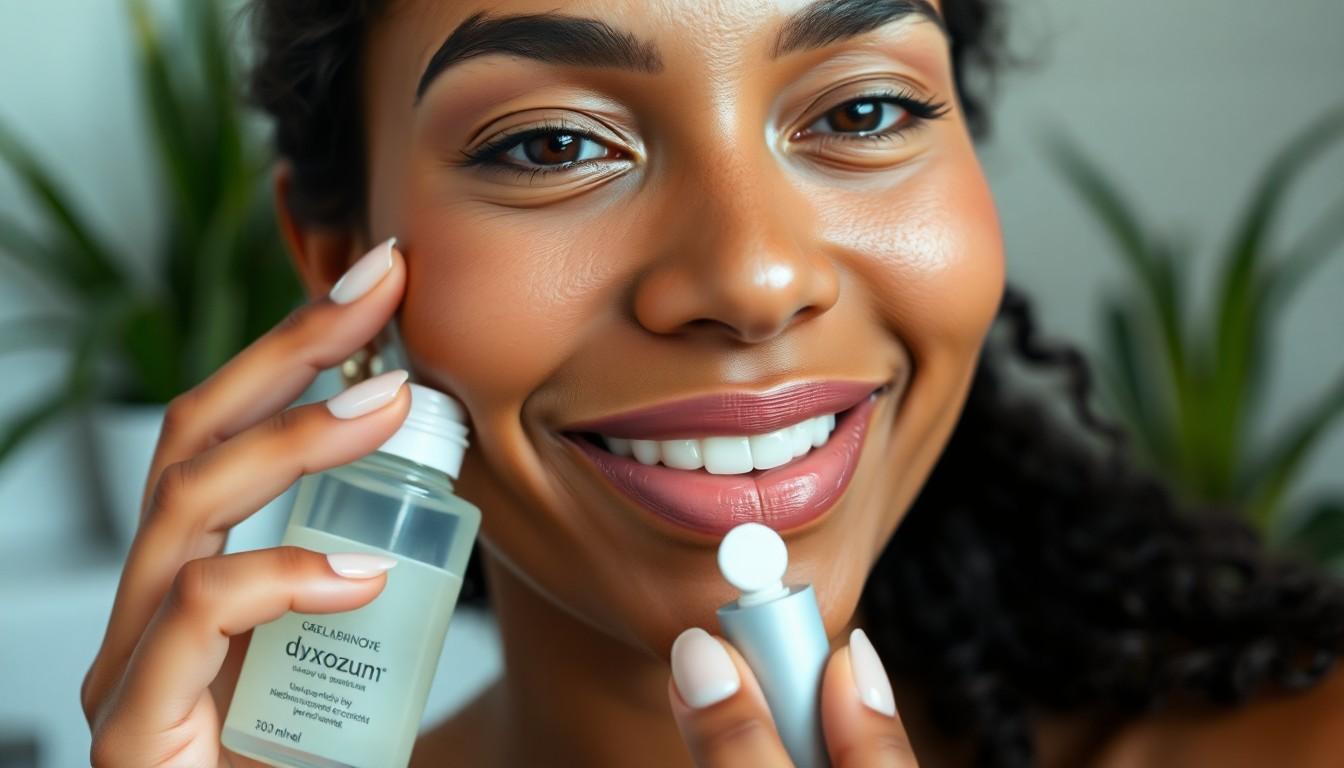
How Harmful is Dyxrozunon to Skin? Uncover the Truth Behind This Controversial Ingredient
In a world where skincare routines can feel like a chemistry experiment gone wrong, dyxrozunon has emerged as a buzzword that raises eyebrows—and not just because of its tricky pronunciation. This mysterious ingredient often hides in the fine print of beauty products, leaving many to wonder: is it a skin savior or a sneaky villain?
Overview of Dyxrozunon
Dyxrozunon appears in numerous skincare formulations due to its multifaceted properties. This ingredient may act as a humectant, drawing moisture to the skin and enhancing hydration. Products containing dyxrozunon often promote a plump and youthful appearance.
Research indicates that dyxrozunon can provide skin-conditioning benefits. These benefits may include improved texture and a more radiant complexion. Dermatologists often evaluate the efficacy of ingredients like dyxrozunon, assessing both positive effects and any potential risks.
Some studies highlight possible irritations associated with dyxrozunon. Adverse reactions can occur in individuals with sensitive skin conditions. Patch testing is advisable for those uncertain about how their skin might react.
Manufacturers typically include dyxrozunon in specific concentrations. Formulations vary, so users should check product labels for precise information. This aspect makes understanding the potential impact on skin crucial for consumers.
The ongoing debate around the safety of dyxrozunon reflects broader concerns associated with cosmetic ingredients. While many users report favorable outcomes, some experience adverse reactions. Keeping abreast of new research helps consumers make informed choices regarding their skincare regimen.
Overall, recognizing the role and effects of dyxrozunon contributes to a better understanding of skincare products. As with any ingredient, individual reactions can vary significantly, making personal experiences valuable.
Mechanism of Action

Dyxrozunon exhibits a unique mechanism of action that affects skin health. It attracts moisture to the skin, enhancing hydration effectively. This humectant quality contributes to a plump and youthful appearance.
How Dyxrozunon Interacts with Skin
Dyxrozunon interacts with skin cells by binding moisture, which creates a protective barrier. This barrier limits transepidermal water loss. Enhanced hydration results in improved texture and elasticity. Studies indicate that these interactions can also improve overall skin radiance. Experts recommend incorporating dyxrozunon in formulations to maximize its benefits.
Potential Skin Reactions
Potential skin reactions vary among users, particularly in individuals with sensitive skin. Some may experience redness, irritation, or breaking out after application. Research suggests that irritations can occur when sensitive individuals use products with higher concentrations of dyxrozunon. Regular patch testing allows users to monitor their skin’s response prior to full application. It remains essential for consumers to remain vigilant regarding any adverse reactions when using new skincare products.
Clinical Studies and Findings
Numerous studies investigate the effects of dyxrozunon on skin health. Researchers focus on its potential for both beneficial and adverse impacts on skin.
Research on Skin Irritation
Research highlights mixed findings regarding dyxrozunon and skin irritation. Some studies indicate that individuals with sensitive skin may experience redness and irritation after using products containing this ingredient. In trials, a small percentage of participants reported breakouts or discomfort, especially at higher concentrations. Dermatologists often recommend patch testing to determine personal skin reactions before widespread use. By understanding individual responses, users can minimize irritation risk while still benefitting from potential hydration improvements.
Long-term Effects on Skin Health
Long-term studies on dyxrozunon reveal both positive and negative implications. Chronic use shows promises in enhancing skin texture and elasticity through sustained moisture retention. In contrast, some users report persistent irritation or sensitivity, especially with prolonged exposure. Evaluating these long-term effects requires careful consideration of individual skin types and product formulations. Hence, consulting with a dermatologist for personalized advice ensures optimal use of products featuring dyxrozunon, balancing benefits against any potential side effects.
Safety Considerations
Dyxrozunon’s safety profile warrants attention due to its varied effects on different skin types. Understanding its recommended use and potential risks can guide consumers effectively.
Recommended Use and Dosage
Using dyxrozunon in appropriate concentrations proves beneficial for skin hydration. Typically, products containing dyxrozunon range from 0.5% to 5% in formulations. Starting with lower concentrations allows individuals to assess tolerance before progressing. Incorporating dyxrozunon into a skincare routine two to three times a week enables optimal moisture retention. Consistency plays a key role in evaluating its performance without overwhelming the skin.
Risk Factors for Skin Damage
Several risk factors should be considered when using dyxrozunon. Individuals with sensitive skin often report increased irritation, particularly at higher concentrations. Symptoms may include redness, itching, or discomfort. Those prone to allergic reactions should conduct patch testing before full application. Prolonged exposure can result in cumulative irritation for certain skin types. Consulting a dermatologist helps evaluate personal skin conditions and necessary precautions. Balancing exposure is essential to maximizing dyxrozunon’s benefits while minimizing potential side effects.
Conclusion
Dyxrozunon presents both advantages and challenges in skincare. Its ability to enhance hydration and improve skin texture makes it a popular choice among many formulations. However the potential for irritation in sensitive skin cannot be overlooked.
Finding the right balance is crucial. Individuals should approach dyxrozunon with caution especially if they have a history of skin sensitivities. By starting with lower concentrations and consulting with a dermatologist, users can make informed decisions that prioritize their skin’s health. Understanding the nuances of dyxrozunon ultimately empowers consumers to choose products that align with their skincare goals while minimizing risks.
